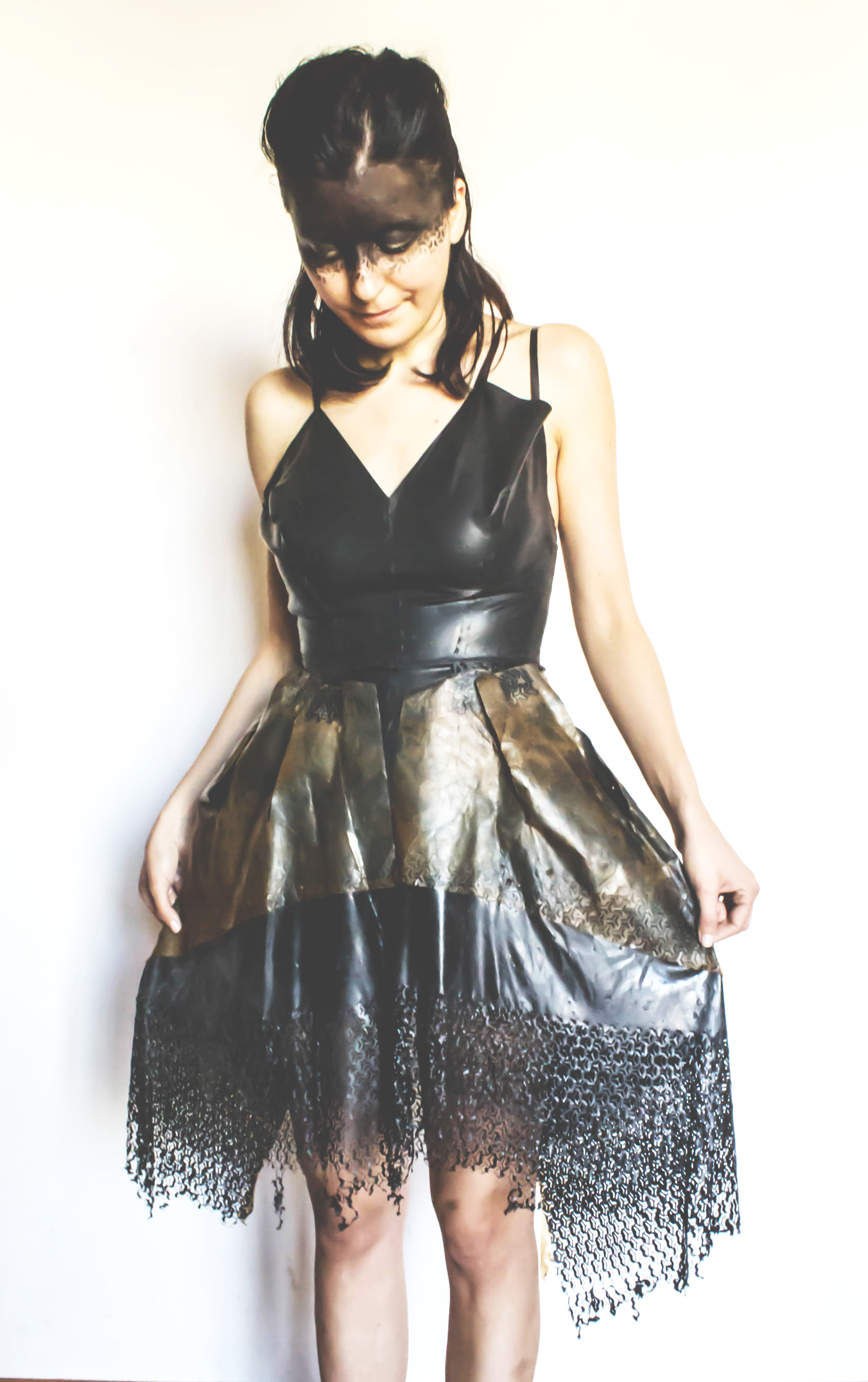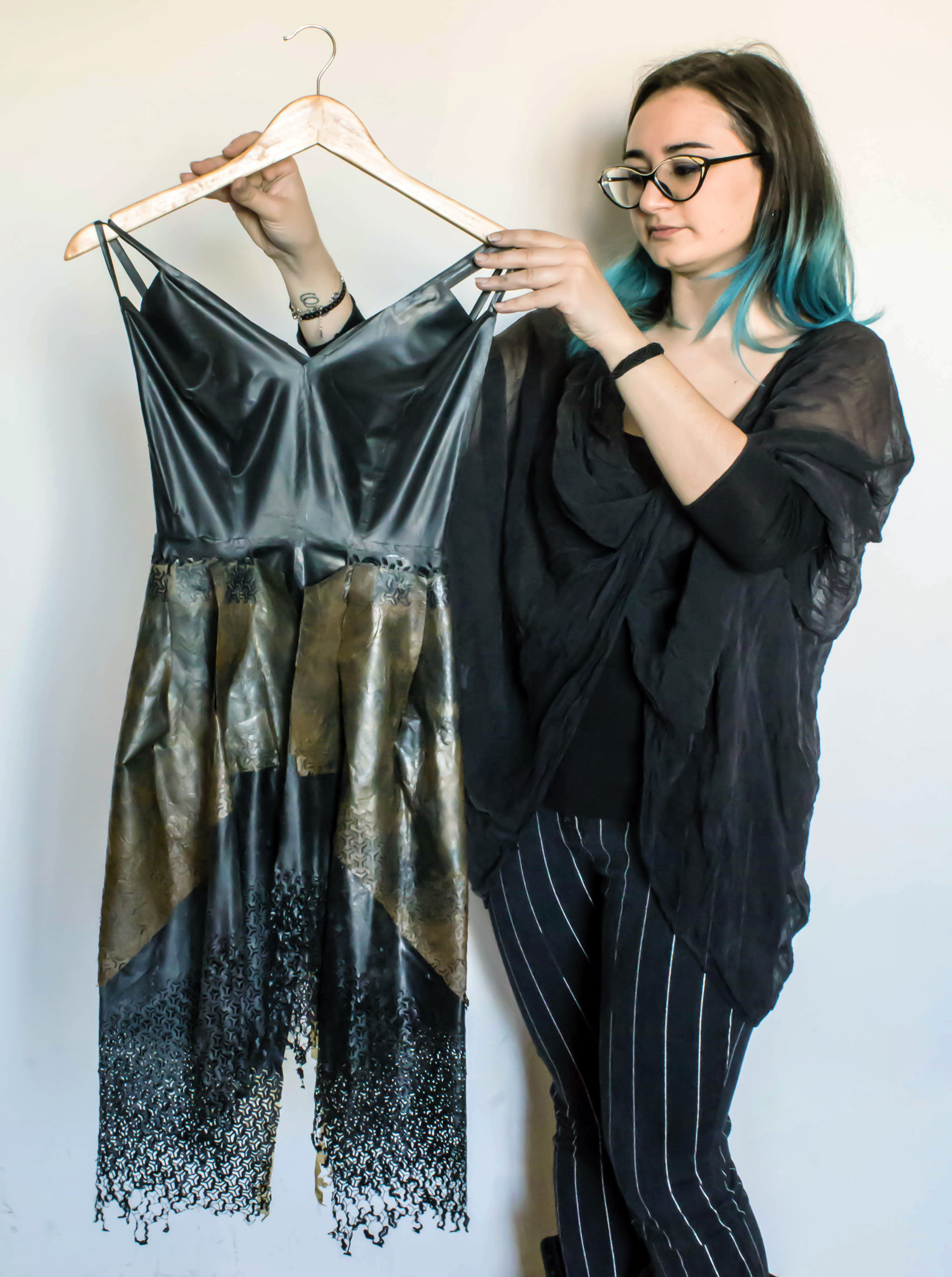Fading Dress final outcomes#
Sewing pattern#
Research#
I am studying the most suitable pattern for the creation of the dress. I will first make a test with three different types of fabrics, to simulate the effect of the pattern and the transparencies.
The first model I developed is composed of two parts that can be separated: a bodysuit and a skirt. Only the skirt follows the degradation process by changing the length. The most delicate parts of the dress (neck, sleeves, waist) remain in latex to be able to withstand without problems. This model could also be developed to replace fading parts.
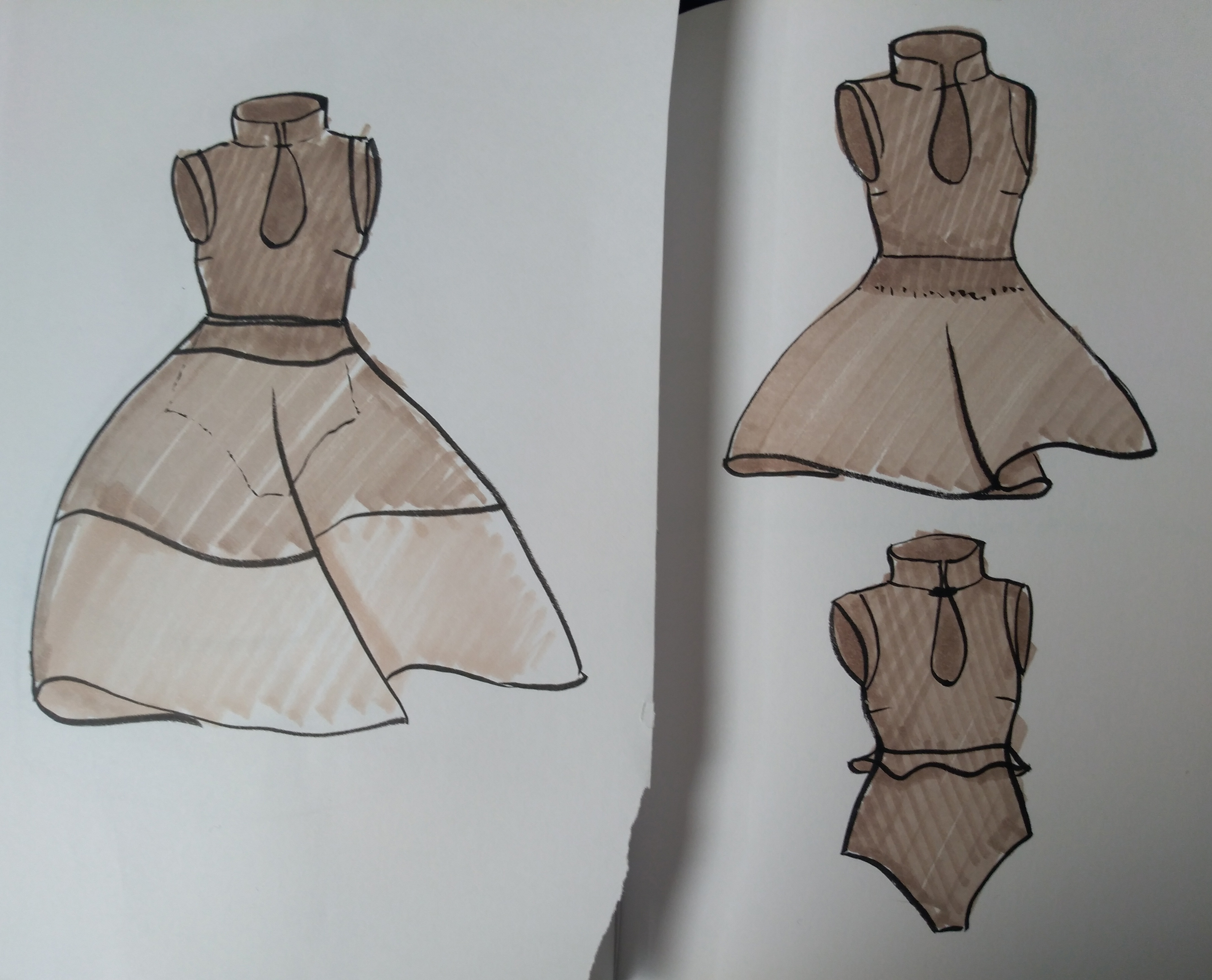
The second model is an open dress on the front, kimono model. The degradation process takes place on the sleeves and on the length of the hem of the skirt. The choice of model is princely to avoid little work and friction when the dress is worn.
The end of the pieces could be more asymmetric and irregular so as to exploit a less trivial change
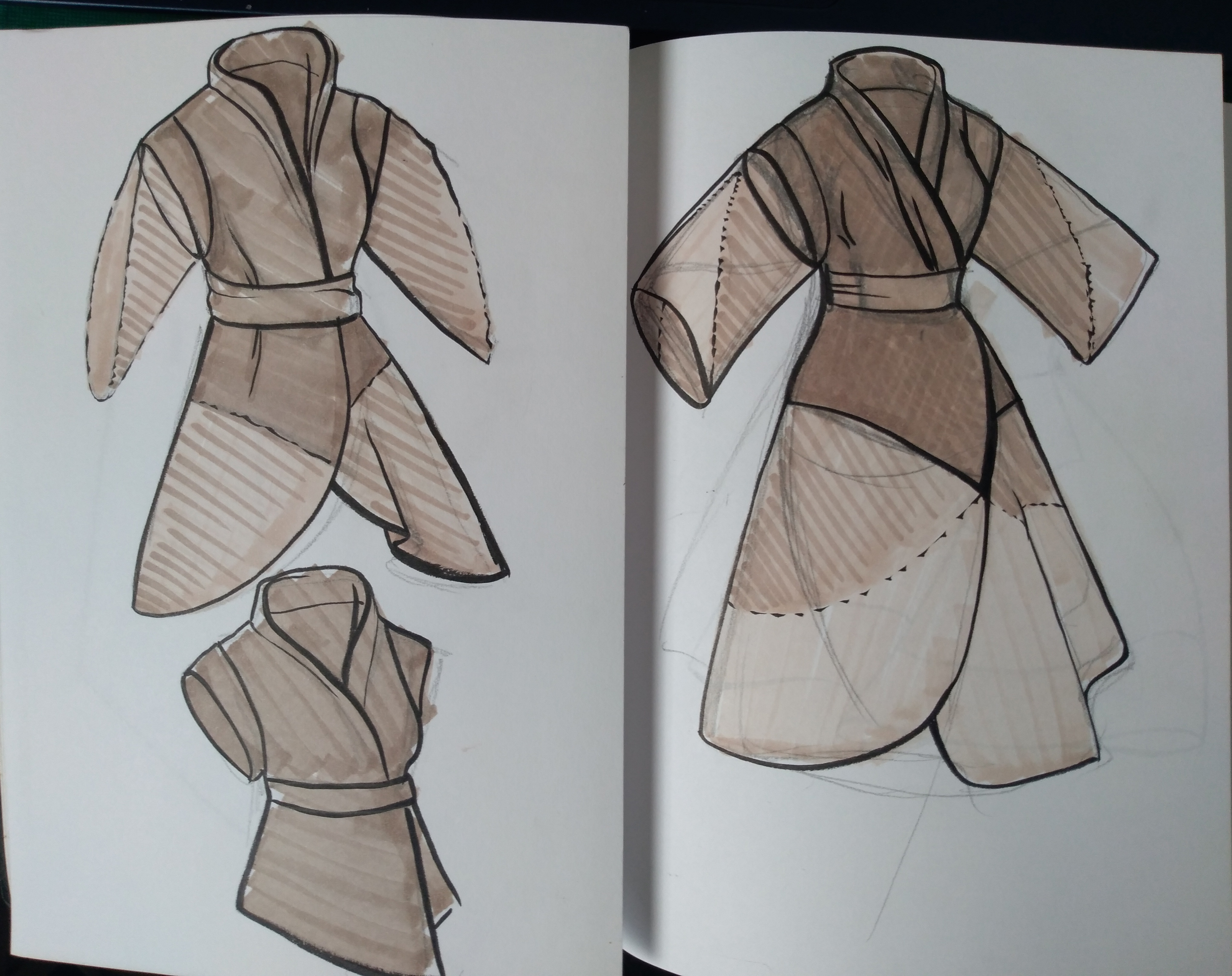
Fabric Prototype#
in order to work on a fabric prototype I created a mockup of the kimono dress (only half) to make changes to the three layers of dress on mannequin. Subsequently I will go to report on the grasshopper the pattern on the pieces of the pattern so as to make the laser cut and imagine the effect.
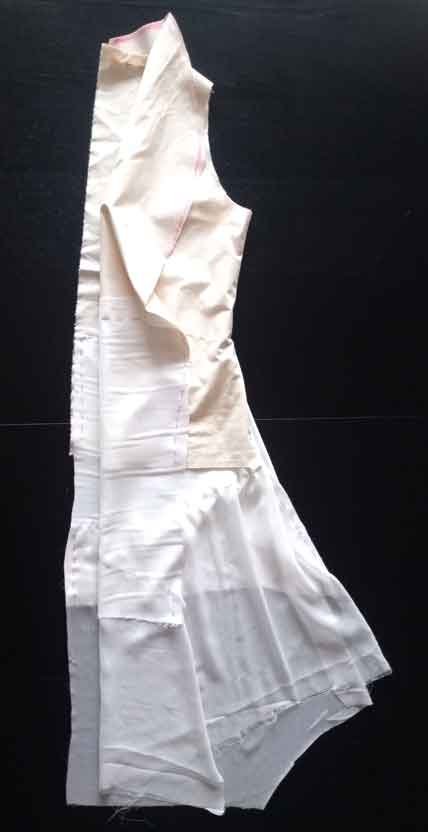
For a matter of time and materials available I also tried the second paper model that I had in mind. A dress made from a very tight body made of strapless latex (I will consider adding them if the weight of the materials is excessive). A ruffle at the waist creates the hook for the dissolving skirt.
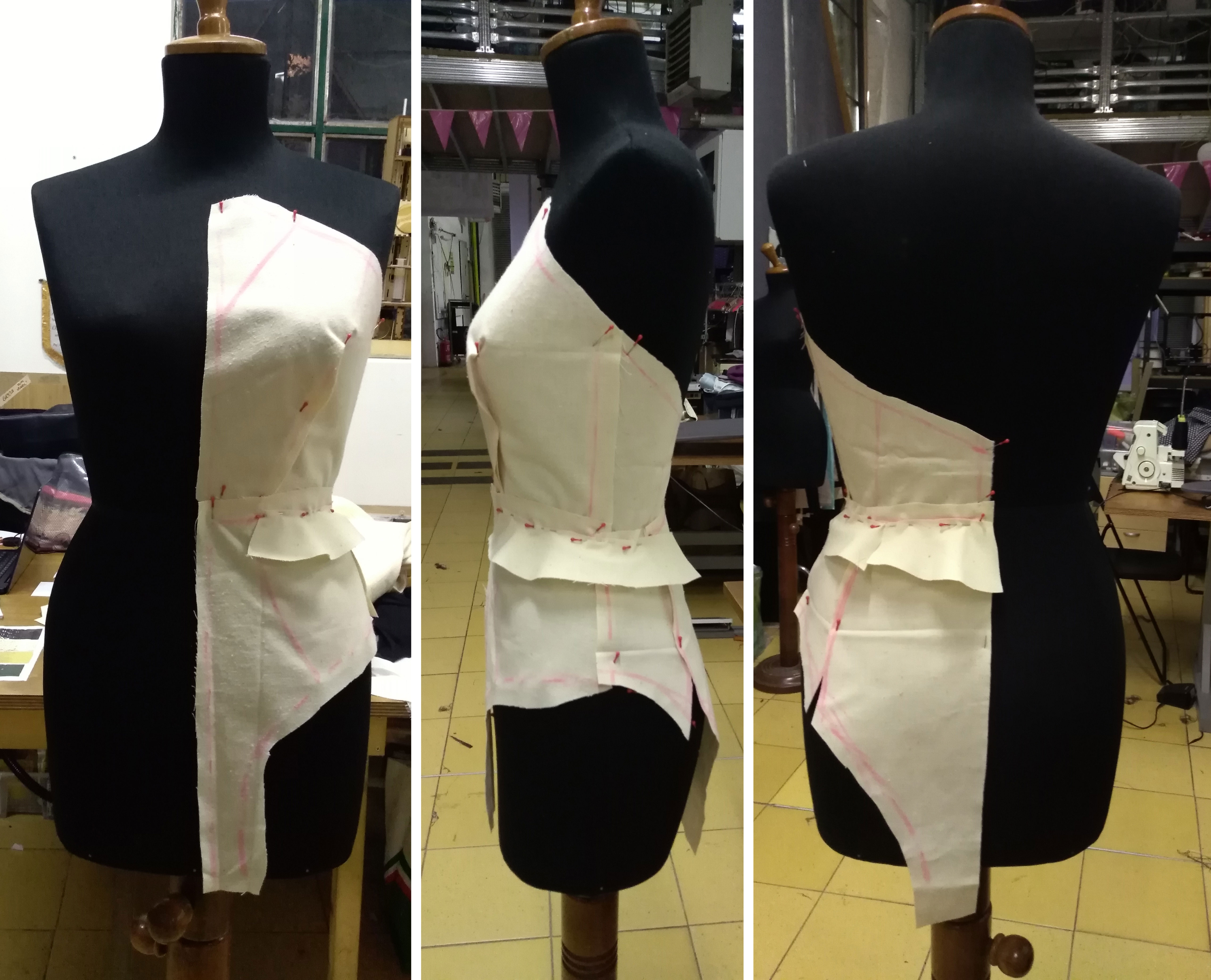
A frack-like tail in kombucha and the bioplastic that closes the skirt on the front, overlapping on a fairly large area on the kombucha
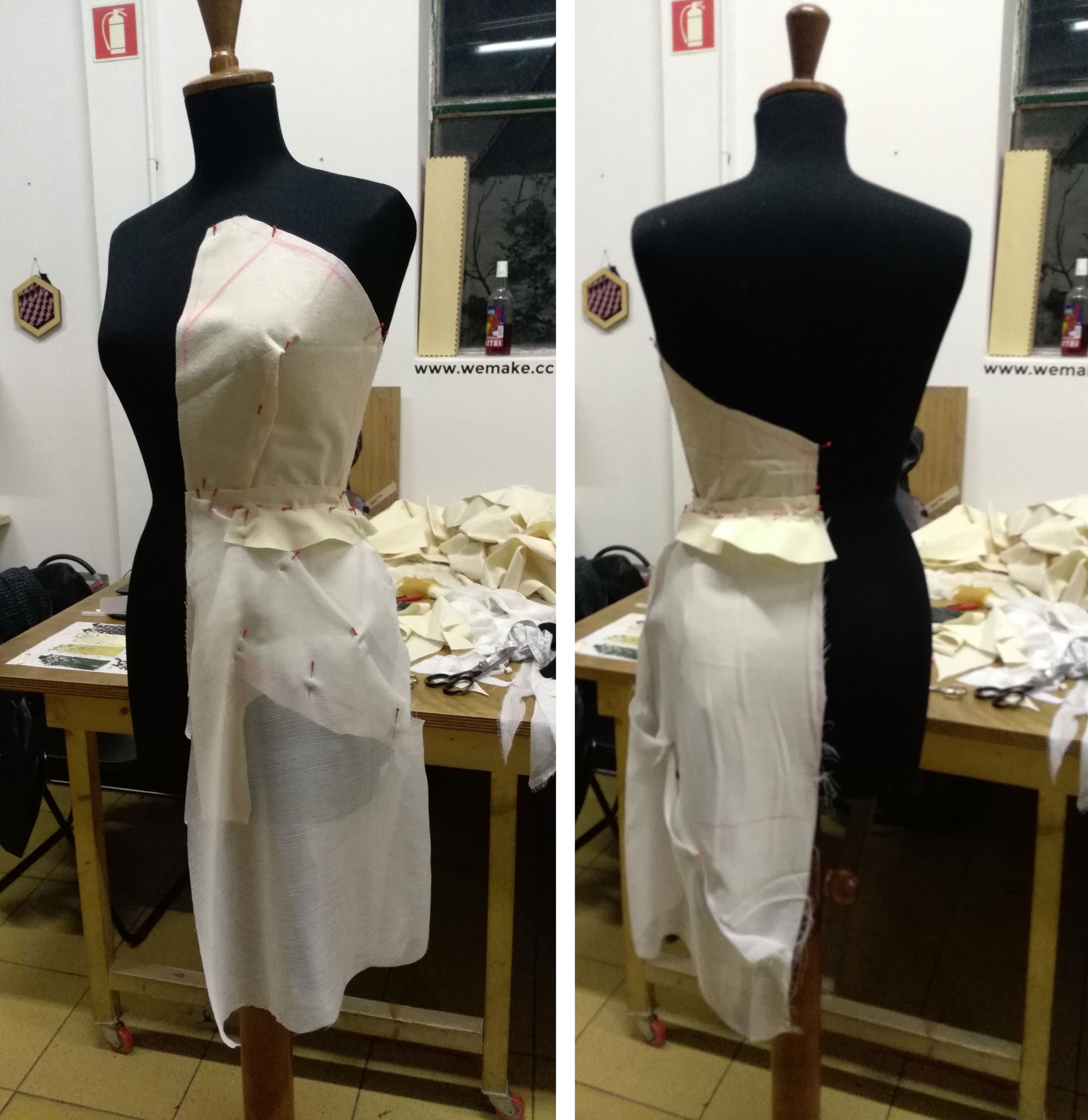
I didn’t have very clear ideas on how to work on the pattern. Not having a training as a seamstress I found it much more comfortable to work directly on the mannequin, creating clear lines for the division of the various materials and filming at the breast and hips. I used my clothes for a correct size and then modified the structure.
Digitalize the Sewing Pattern#
After this manual step I removed the pins (many) and I photographed the pieces of the pattern with a square of paper as a reference to resize the tracing on rhinoceros. I also used this method to catalog the pieces available for wemake latex, to make the most of what is needed
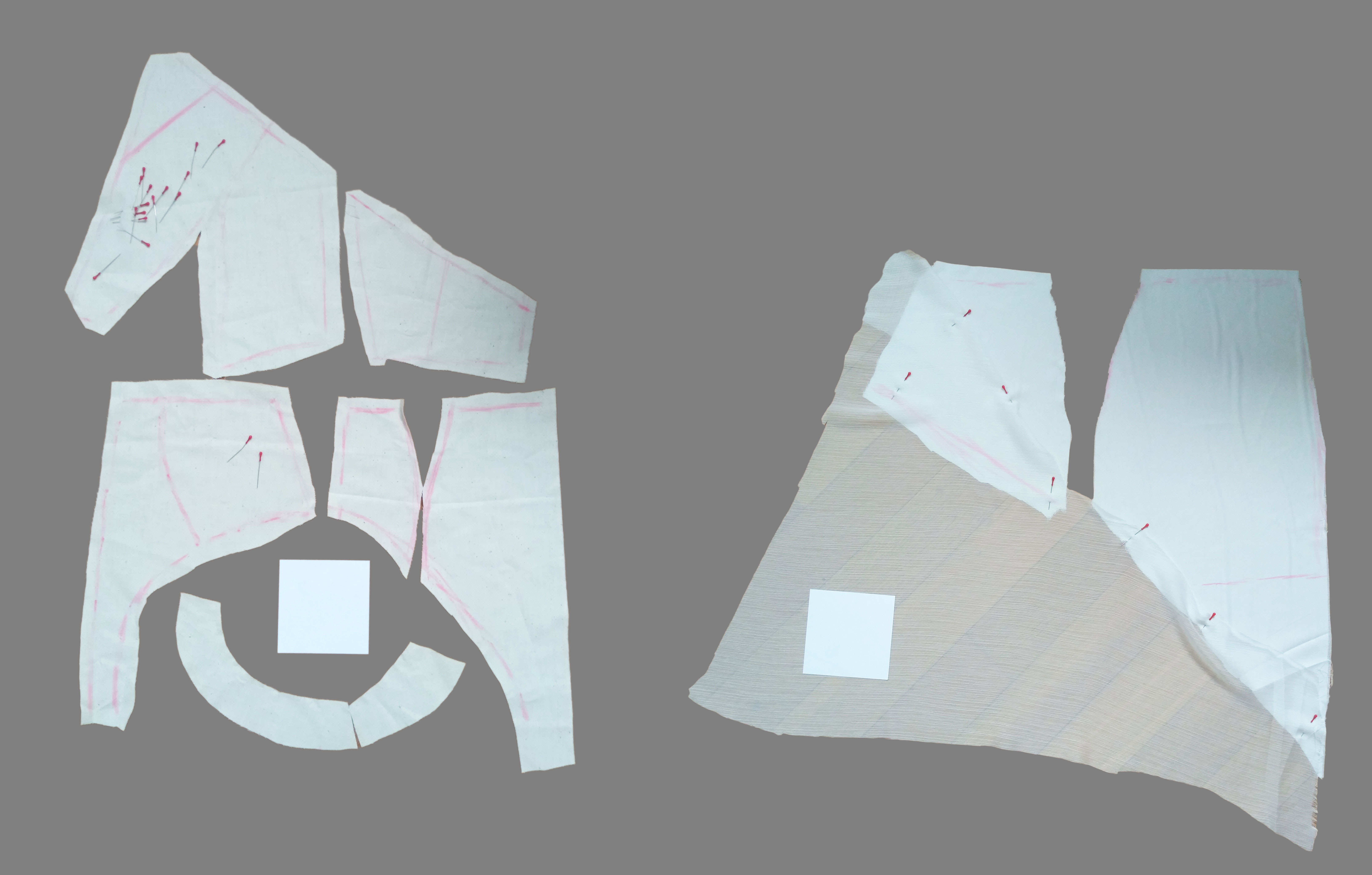
.png)
After tracing the pieces on Rhinoceros I will apply the Japponese gradient pattern trying to laser the fabrics and gluing them to simulate the weight and the effect (always on one half of the dress).
If everything works, I’ll move on to the final materials.
Correction of dxf file#
After make the lasercut I’ve realize that the sewing pattern for the bodysuit was too large for the latex so I’ve make it small by hand. Here the evolution of the file

Prototype#
Some considerations (From Theory to Reality)#
After completing all the steps I tried to make for the dress I had to solve many problems due to many factors (natural and irregular, delicate materials, behavior of fabrics in ways I didn’t know yet …) I improvised many solutions both for the time and for the workflow that the materials imposed on me. Glue that had to take hold, layers that had to dry before being worked with the laser or combined with other materials ....
Kombucha Part#
For laser cutting the kombucha I had to have a lot of tips and tricks. I had a sheet shape that fits to both pieces of the skirt. However, the edges of the sheet were wavy. I solved this problem by first cutting the edges, spreading the pieces with weights and then restarting the machine for the decoration. In this way I managed to get the pieces as precise as possible.

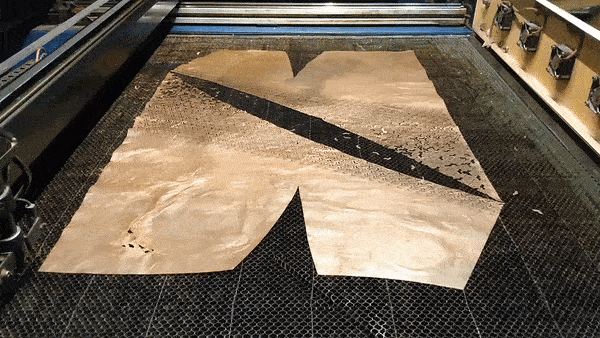
Cut Time 37’ 31’‘
Some images and closeup of the result
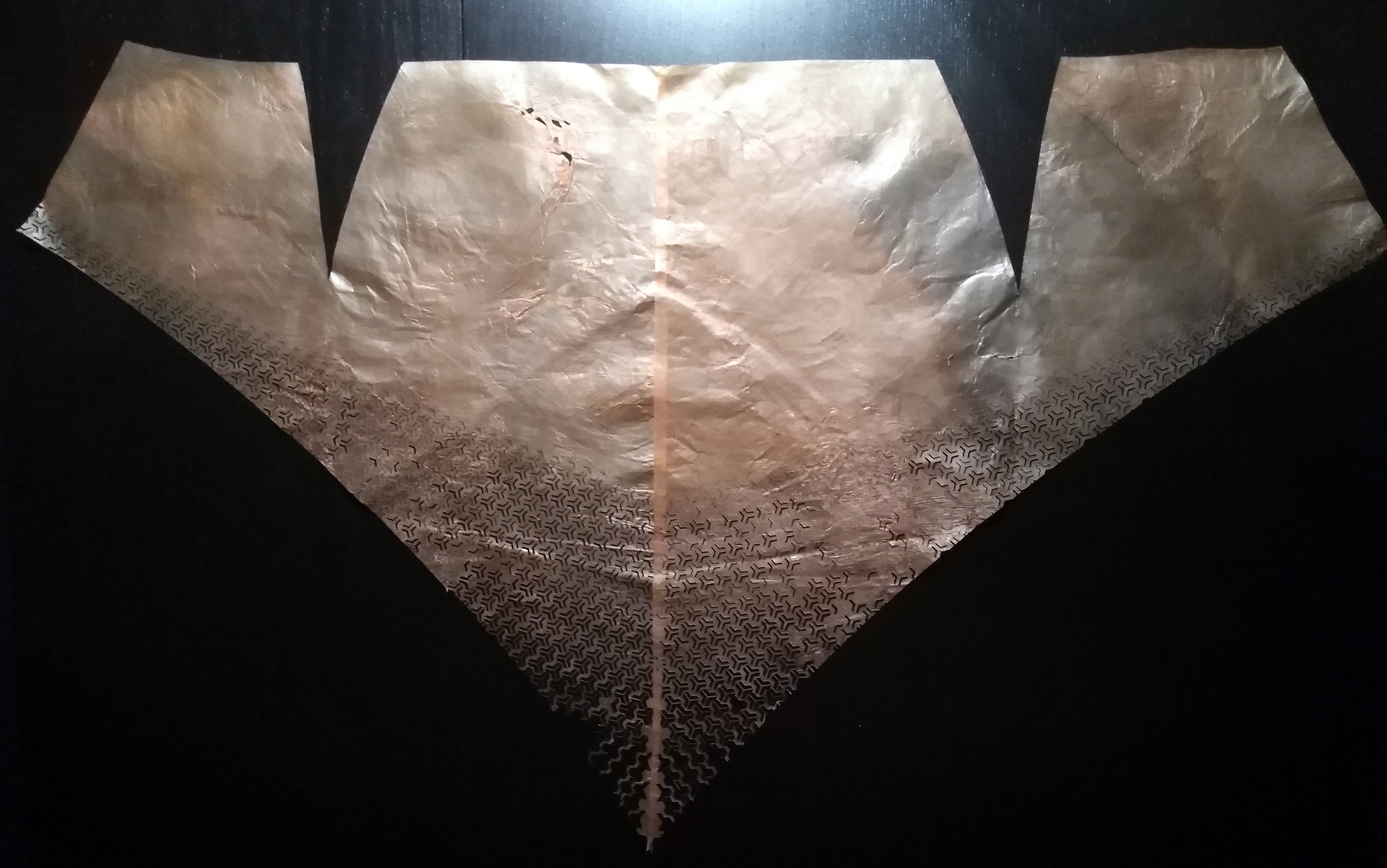

Latex Part#
To combine the latex pieces I used a liquid latex glue. The necessary steps are to roughen the part to be glued with sandpaper, distribute the glue, press trying not to let the excess out in visible points (very difficult passage !!)

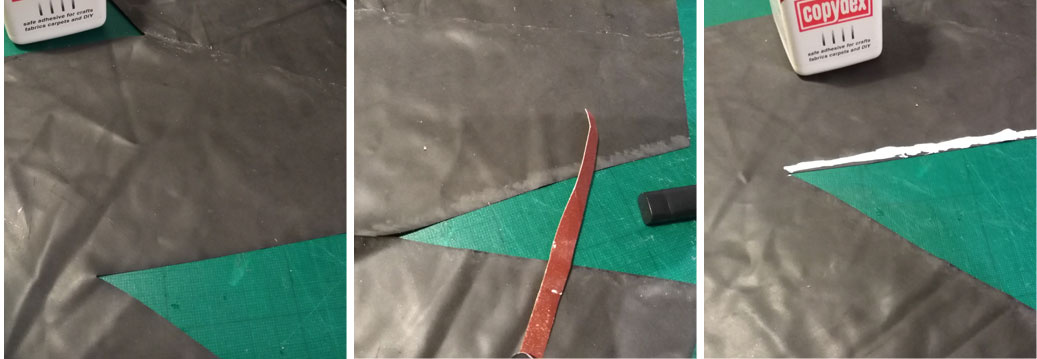

At this stage I made a mistake (perhaps due to fatigue). I measured the pieces of the pattern without considering that the fabric of the model did not contain elastane while the latex is very elastic. I realized this problem when I had to glue the pieces: the bodysuit was too wide. I tightened all the pieces by hand (eliminating from 3 to 5 cm in the widths) trying to match the parts already glued.
I applied an invisible black zipper on the back of the bodysuit and plastic press studs previously applied to a fabric on the pant gusset.
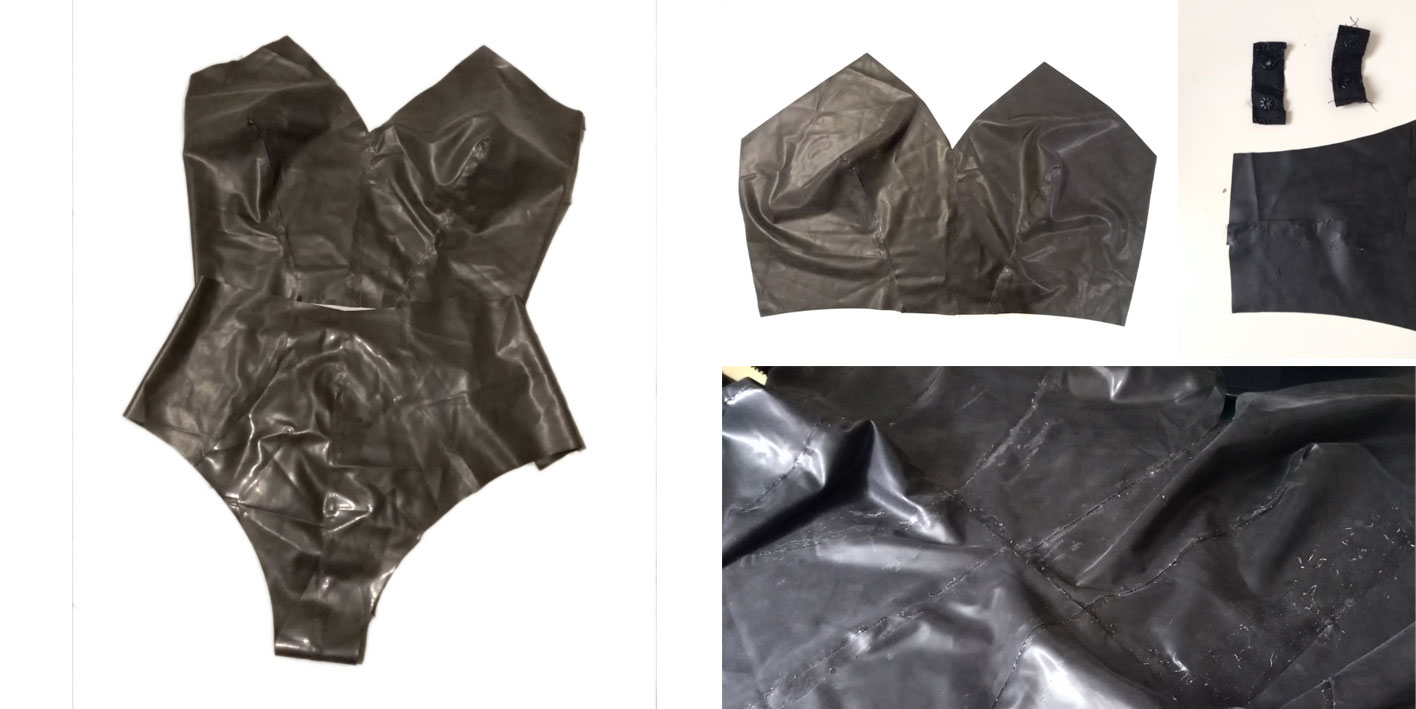
Cut Time * Bodysuit 1’ 28’‘ * Volant Stripe 9’ 17’‘
Bioplastic Part#
After having made several recipes I chose to use the one for biosilicone with gelatine although I would have preferred to use all the ingredients of vegetable origin. I multiplied the doses by 6 for a single skirt sheet. I decided to increase the size of the piece of pattern by combining the bioplastic with the bodysuit waistline.
I created borders with adhesive paper tape on a PMMA plate to use a smooth and regular surface and have no problems when I go to remove the bioplastic sheet.

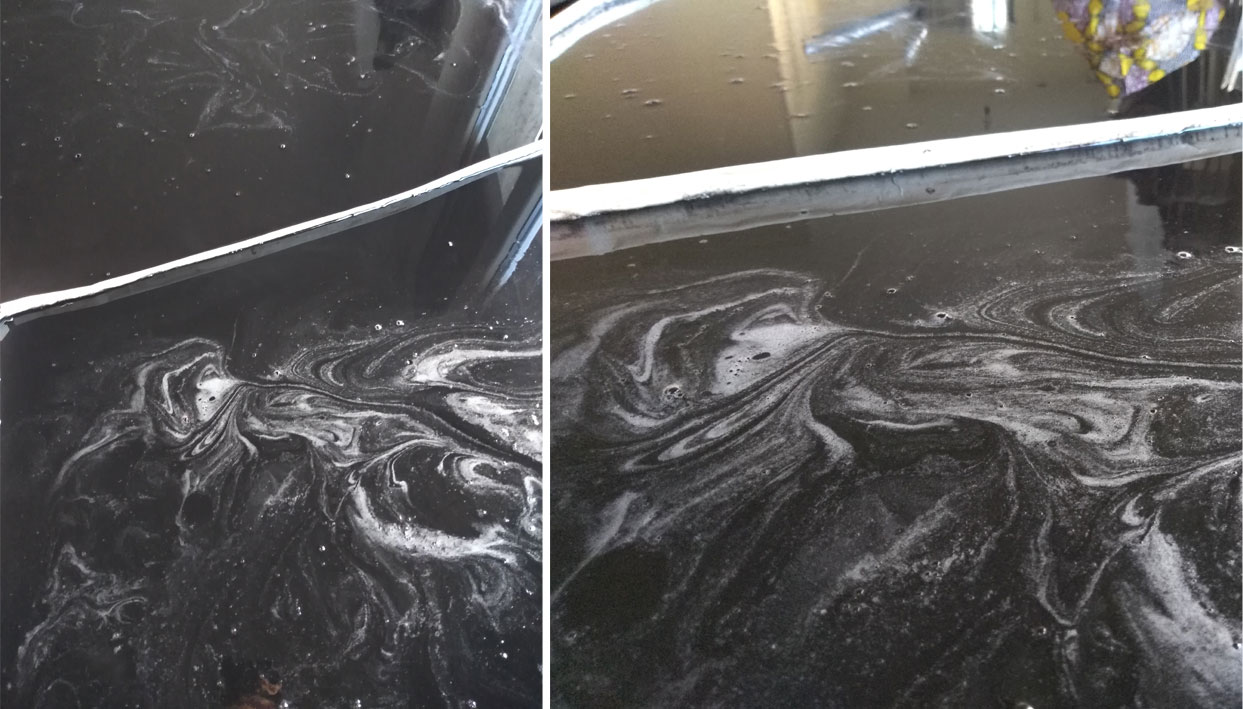
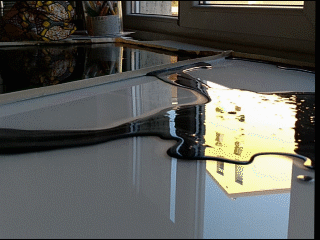
I’ve used talc when i’ve peeled of the sheet. It was so delicate and a little bit sticky. I was however inaccurate in the size of the mold and one of the two sheets did not coincide with the dimensions provided in the laser cutting. one strip of bioplastic was missing. I added and merged the missing part after cutting, wetting the part and applying pressure. The pieces have dried in the air.

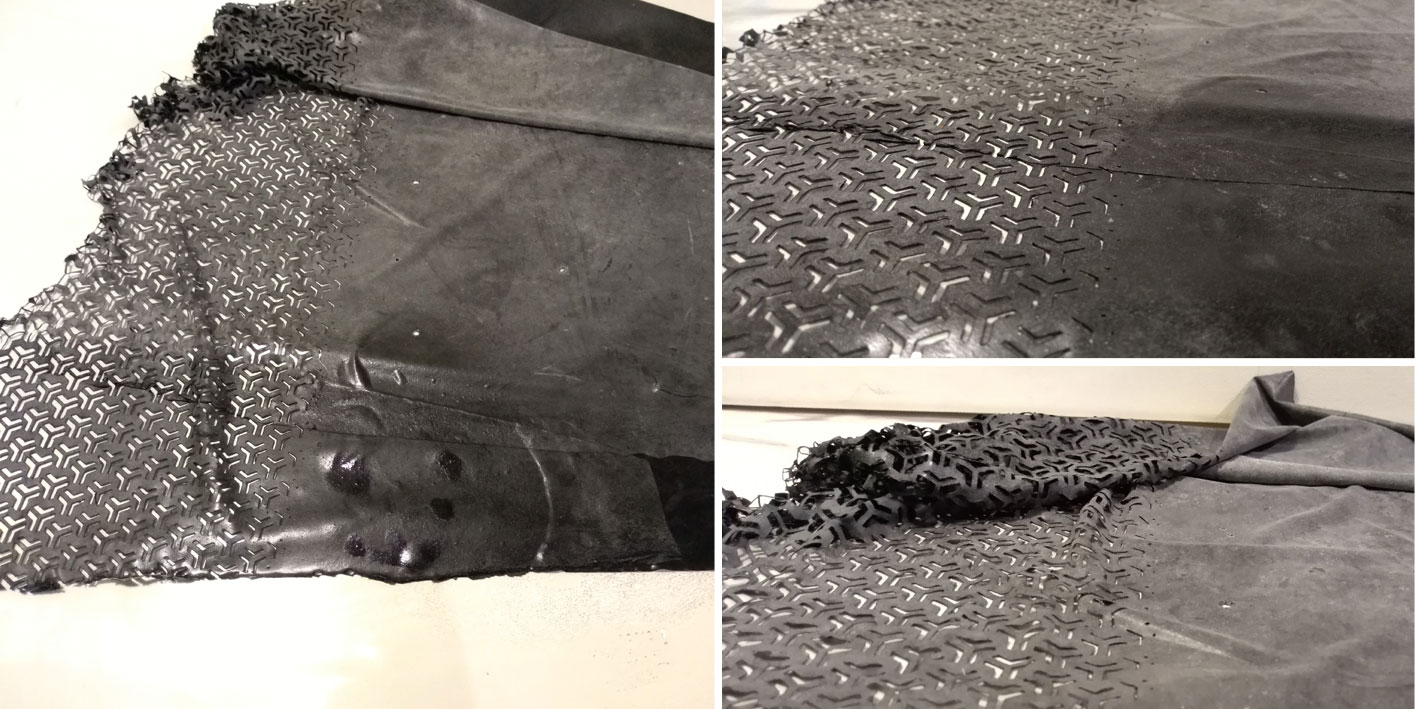
Cut Time (x2) 50’ 05’‘
Join and some Changes#
Immediately after laser cutting all the pieces I tested the effect on the manikin. I had to finish all the parts but I needed a confirmation to be able to continue assembling the materials together.
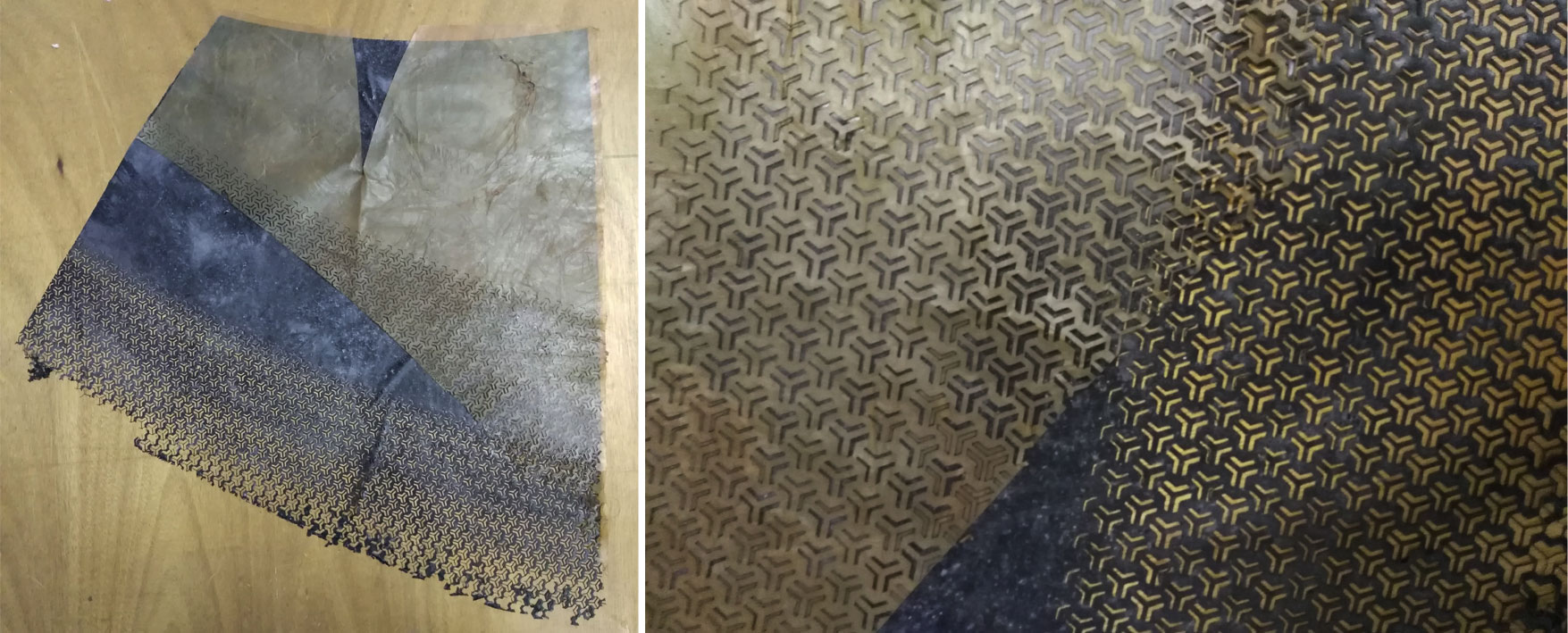

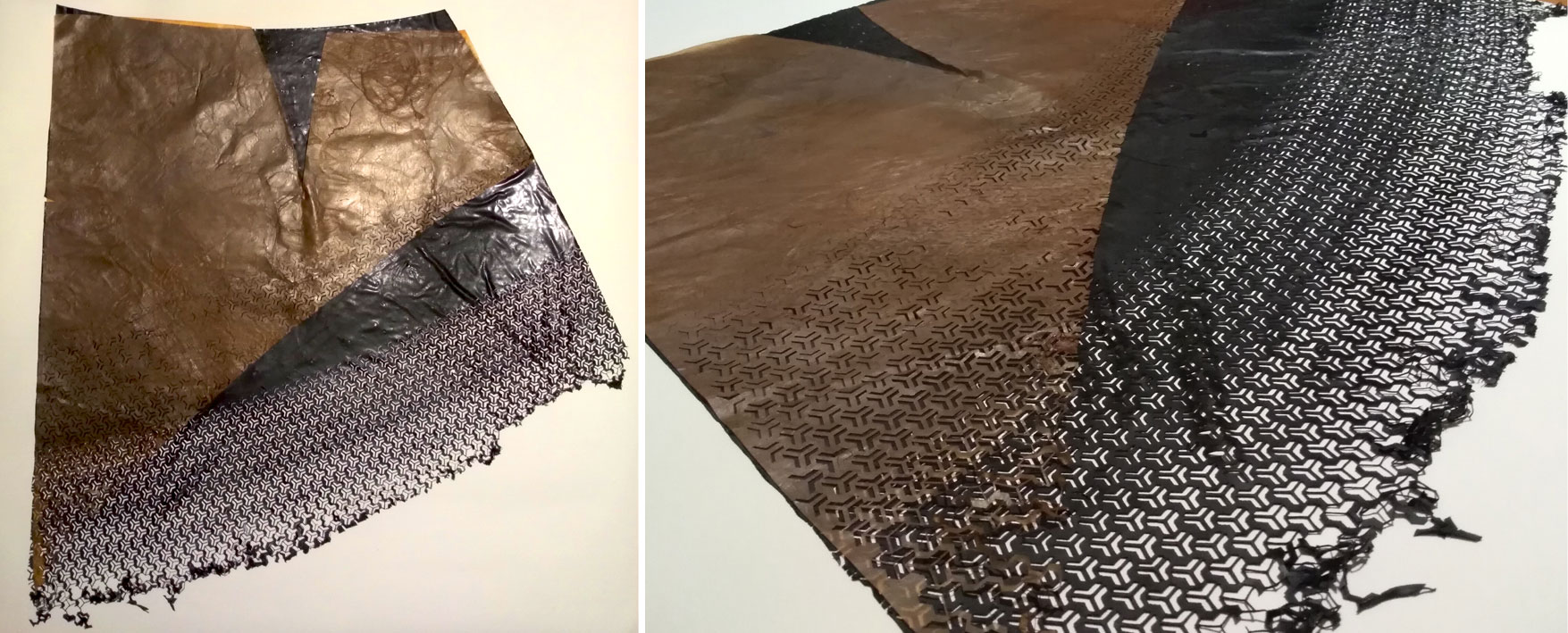
At home I spread the sheets of biomaterials on the floor and started to wet the Bioplastic with a vaporizer and after the kombucha with a microfibre cloth. I pressed the layers well, putting them in contact and letting out bubbles and imperfections. The kombucha changes color slightly when it is wet, it becomes whiter. The transparency suggest the adhesion with biosilicone.
At the bottom, the wet panel next to the panel is still dry.
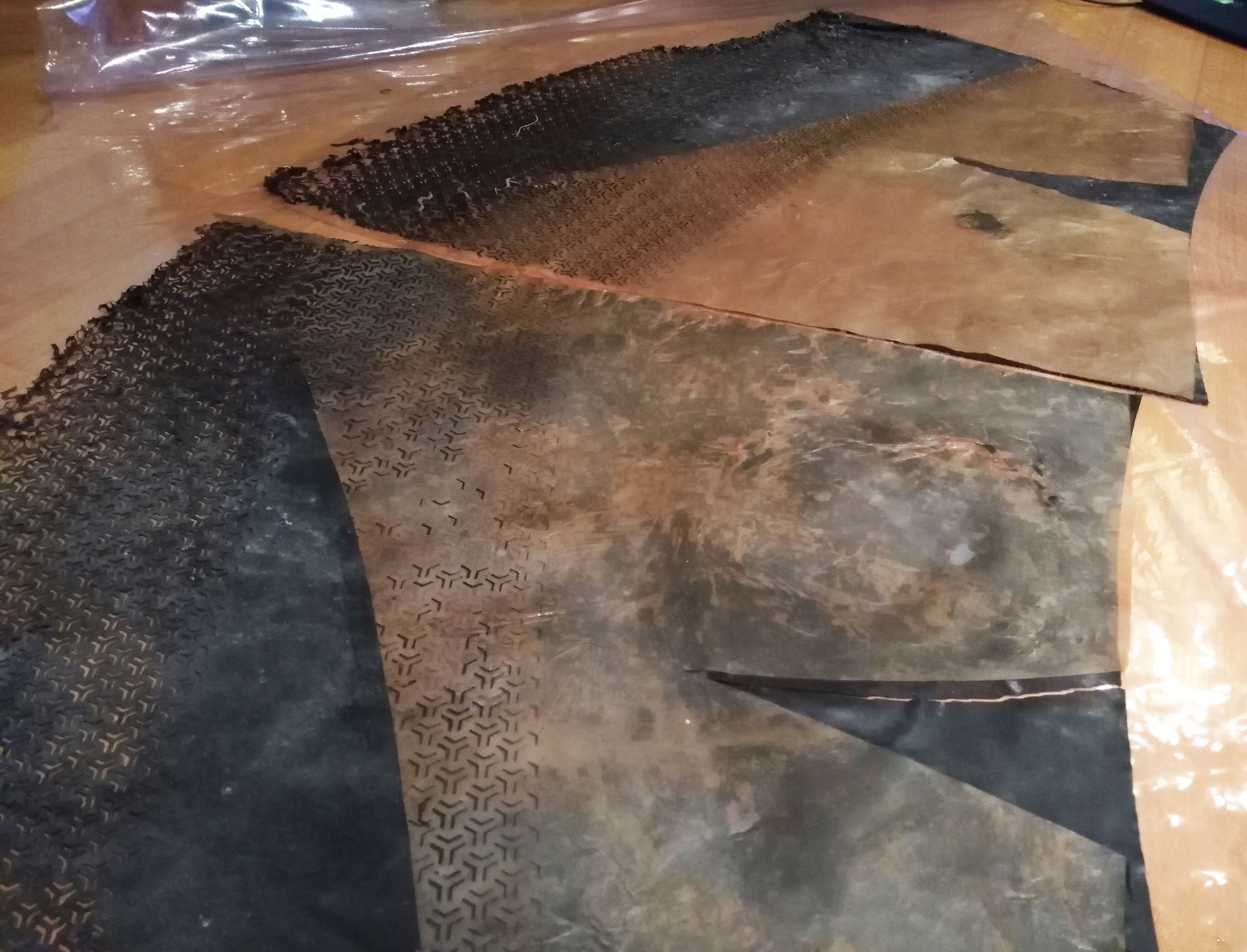
When the sheets of the skirt are dry enough, I started thinking about the union with the bodysuit’s waistline. With so much elasticity of the latex base, perhaps the type of coupling would not have been sufficient. I then divided the ruffles at the waistline at the seams and created further cuts of the skirt in biomaterials so as to become almost gills and be able to enlarge with much more comfort.


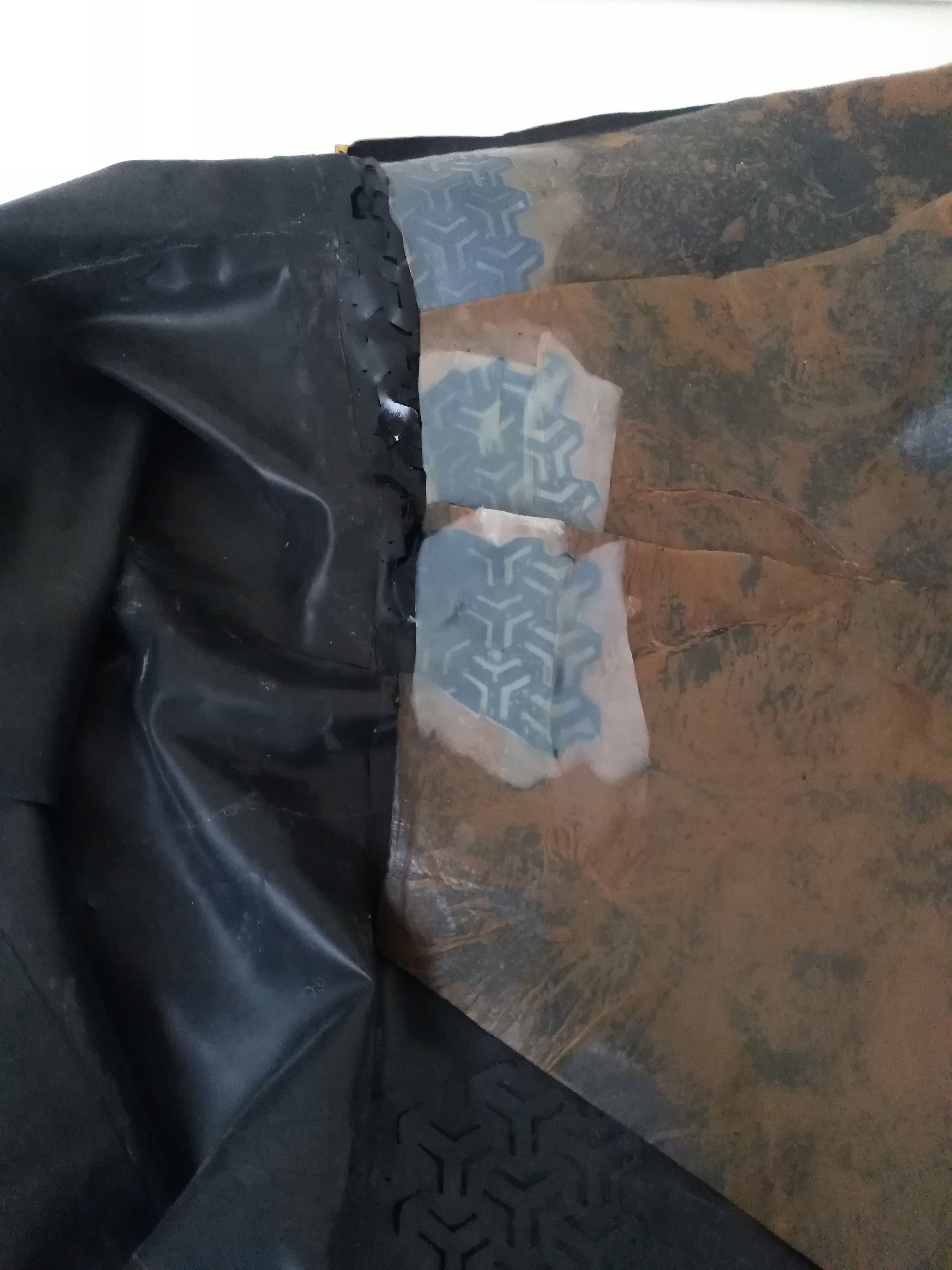
tip: do not accelerate the drying of the joints with the heat of an hair dryer. Bioplastic with heat melts.
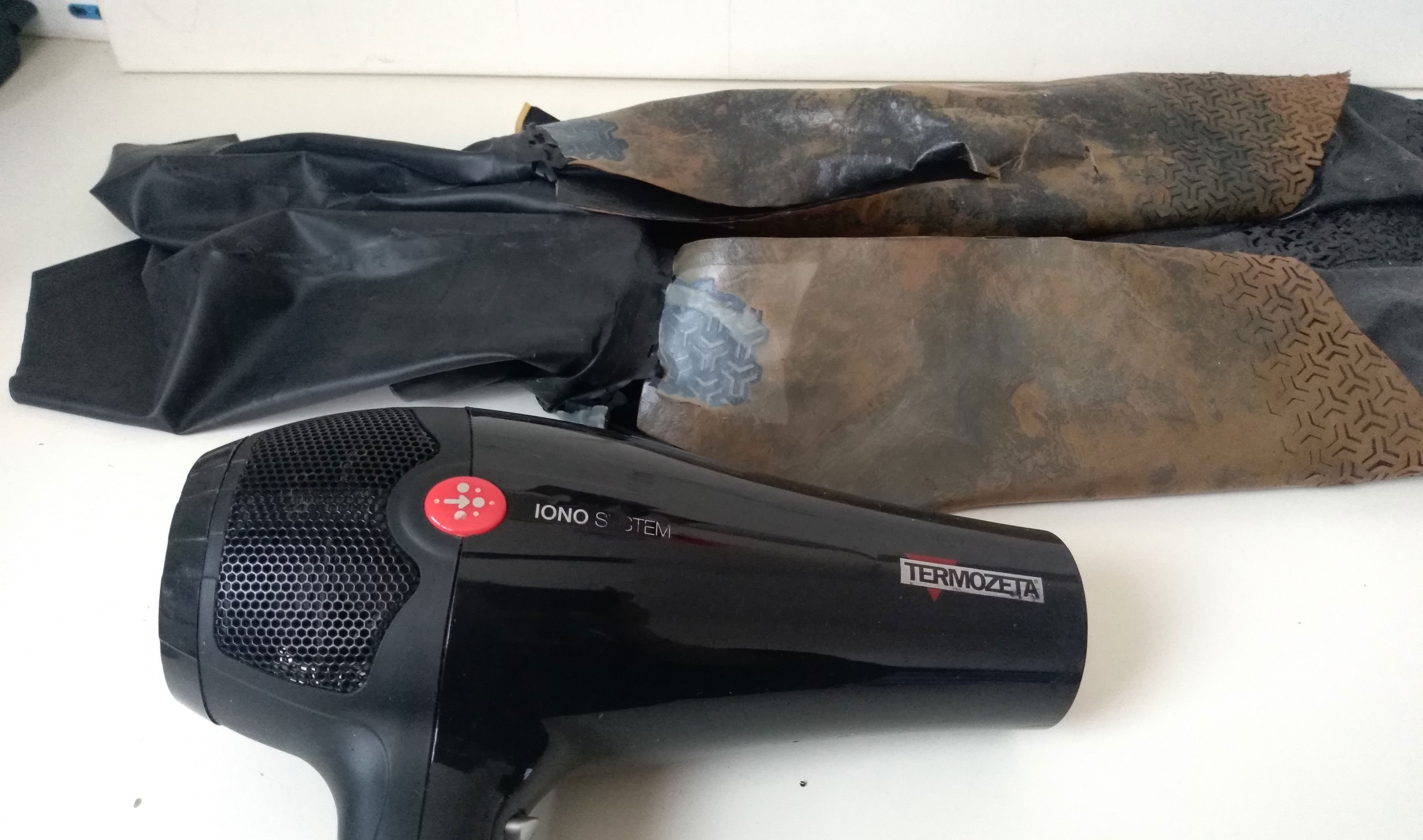
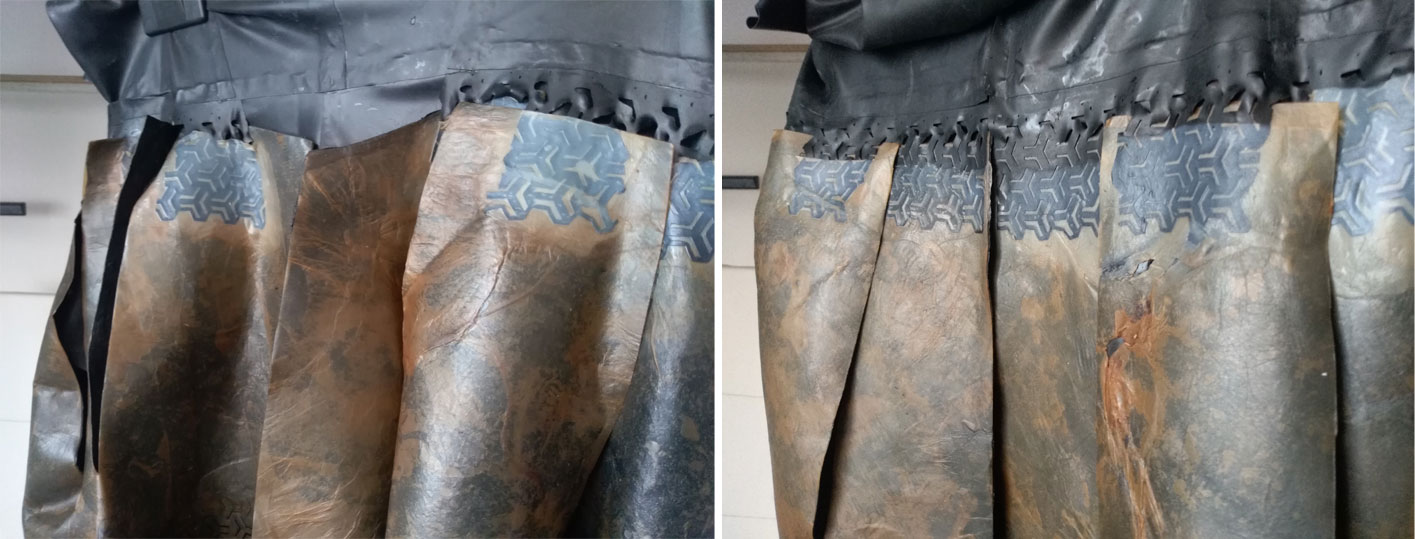
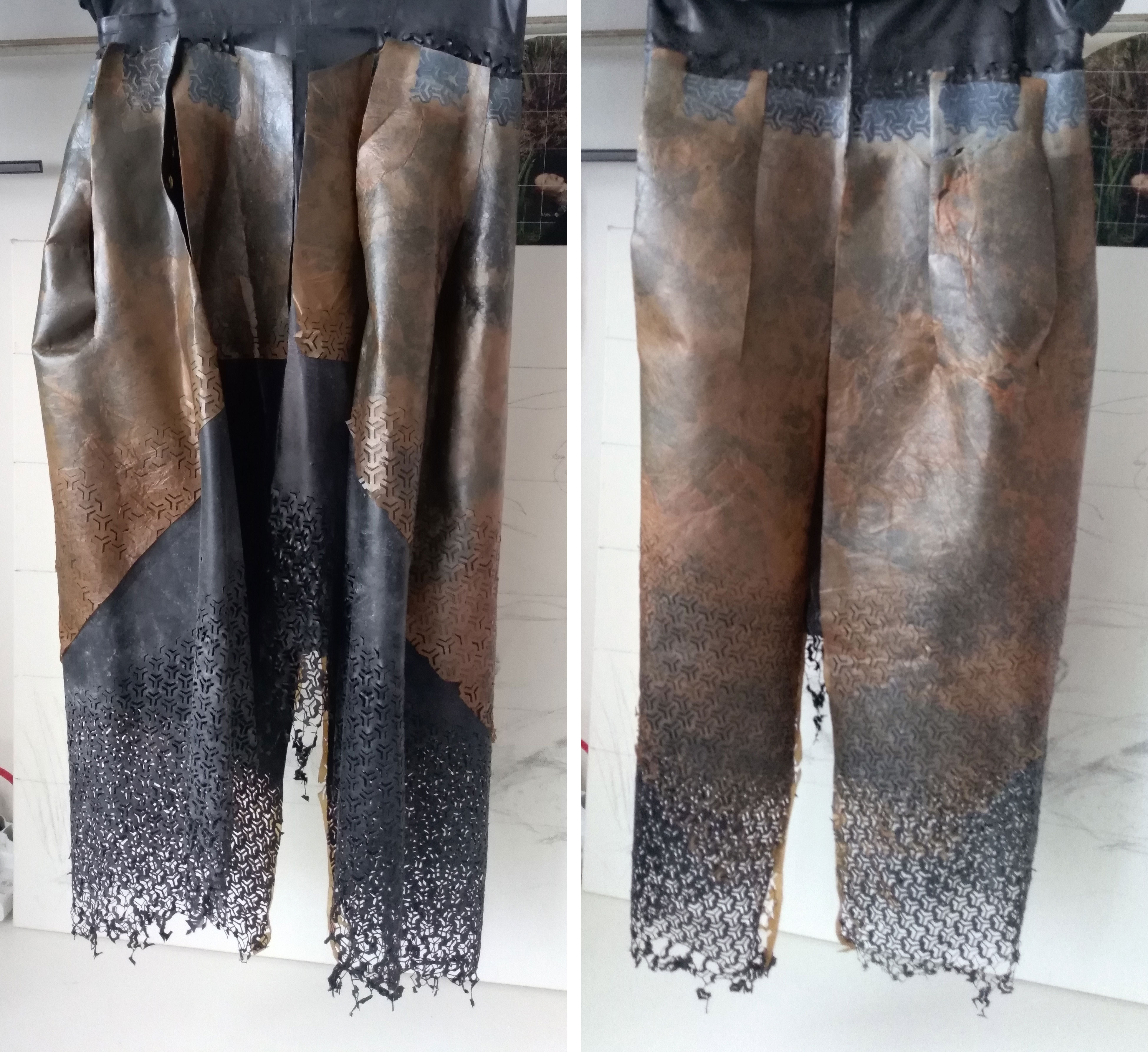
Fading dress_greta from Greta Dalessandro on Vimeo.
Results#

